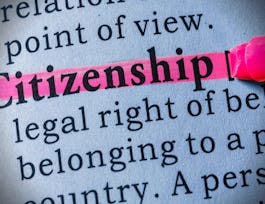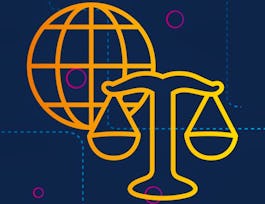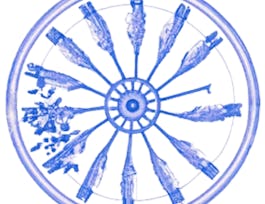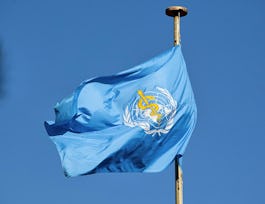This course provides insight into the phenomenon of internal displacement, a major humanitarian and development challenge in today’s world. Taking a global perspective, you will learn about who internally displaced persons (IDPs) are and where they come from, as well as delving into the fundamentals of the global protection response for IDPs and potential ‘solutions’ for those who have been internally displaced. The course places you at the centre of the learning experience through engagement with a range of robust and challenging activities, materials and online peer engagement.



Internal Displacement, Conflict and Protection


Instructors: Professor David Cantor
Sponsored by Louisiana Workforce Commission
7,964 already enrolled
(60 reviews)
Details to know

Add to your LinkedIn profile
2 assignments
See how employees at top companies are mastering in-demand skills


Earn a career certificate
Add this credential to your LinkedIn profile, resume, or CV
Share it on social media and in your performance review

There are 7 modules in this course
This session introduces you to this online training programme, its learning objectives and the essential skills that we envisage you will learn. Please review the Key Information document, the Course Introduction video and activities and then proceed to our first weekly lesson: ' Internal displacement: scale, causes and effects’.
What's included
1 video3 readings2 discussion prompts
Internal displacement due to armed conflict is a global phenomenon in today’s world. This session introduces you to key figures on the scale of internal displacement globally, as well as current trends in the drivers of internal displacement and its effects on those displaced.
What's included
1 video2 readings1 assignment2 discussion prompts
Since the 1990s, the fundamentals of an international system for responding to the protection and assistance needs of internally displaced persons (IDPs) have become increasingly established. This session introduces you to debates around the emergence of IDPs as a global category of concern. This session also outlines the main features of the framework for IDP protection at global, regional and national levels, as well as the roles of the main institutional actors at the international level in responding to internal displacement.
What's included
1 video2 readings1 assignment2 discussion prompts
Last week, you studied law and policy frameworks on IDP ‘protection’ – but, in situations of conflict, what does that mean in practice? This session will examine not only the main elements of the term ‘protection’ in conflict contexts but also the practical challenges and responses to attempting to provide protection to IDPs during conflict. This week will also ask you to think about protection as a state that is not only provided by others but which also be developed through the agency of IDP communities that have their own mechanisms for self-protection in conflict contexts.
What's included
1 video2 readings1 peer review2 discussion prompts
This session analyses ‘durable solutions’ to internal displacement. This concept describes three processes through which IDPs overcome the vulnerability imposed by displacement and retake control of their lives. The session will explore the conceptual content of such solutions. It will also show that, in practice, the pursuit of durable solutions engages not only humanitarian concerns but also long-term processes of development. This week will also assess the specific challenges of achieving durable solutions in light of the growing number of urban IDPs who seek to re-establish themselves in cities and other urban contexts.
What's included
1 video2 readings1 peer review2 discussion prompts
This session introduces you to the role of identity and social status in shaping women and men’s experiences of displacement as well as responses to displacement. It will give you a better understanding of the social impact of displacement on women and men at the individual, familial and community level. This session also asks you to think about how gender and other social markers can influence experiences of displacement.
What's included
1 video2 readings1 peer review3 discussion prompts
This session explores the lived experience of internal displacement and looks at how IDP narratives are used in creative and advocacy contexts. The sources for this session highlight some of the key issues faced by IDPs – such as building/rebuilding homes, access to education, relationships with host communities – and provide a showcase of the varying ways IDPs give creative expression to their experiences. This week also asks you to consider how IDP testimony can elevate issues of internal displacement in the public sphere.
What's included
1 video2 readings1 peer review2 discussion prompts
Instructors


Offered by
Why people choose Coursera for their career




Learner reviews
60 reviews
- 5 stars
91.66%
- 4 stars
6.66%
- 3 stars
1.66%
- 2 stars
0%
- 1 star
0%
Showing 3 of 60
Reviewed on Jul 8, 2022
The course was taught very well. Keep up the good work.
Reviewed on Aug 12, 2024
the course was incredibly well structured and instructor passion for the subject was evident in every lecture.
Reviewed on Jan 9, 2022
It was an awesome opportunity taking this course. I liked the format of the training. Got insights on things I ignored about the plight of IDPs and how well to serve them.
Recommended if you're interested in Social Sciences

University of Geneva

Imperial College London

University of Colorado System

Open new doors with Coursera Plus
Unlimited access to 10,000+ world-class courses, hands-on projects, and job-ready certificate programs - all included in your subscription
Advance your career with an online degree
Earn a degree from world-class universities - 100% online
Join over 3,400 global companies that choose Coursera for Business
Upskill your employees to excel in the digital economy



